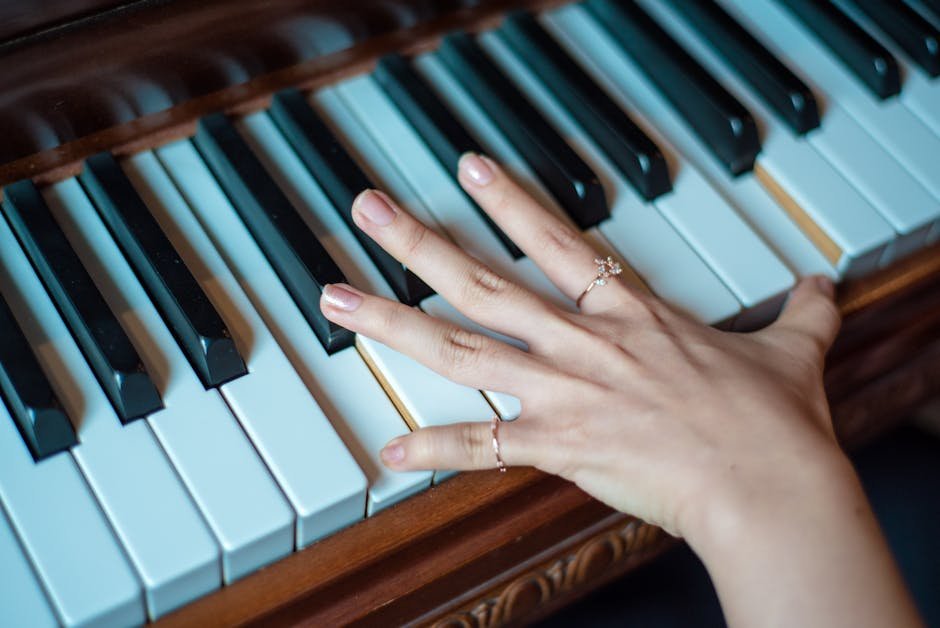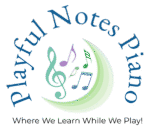💭 What Is Shuffle Practice?
Imagine hitting “shuffle” on your favorite playlist. You’re still hearing all the songs—but not in the same predictable order. That’s the idea behind shuffle practice—a smarter way to reinforce musical learning by switching things up.
In more technical terms, this strategy is called interleaved practice—a method backed by cognitive science to enhance long-term retention and flexible skill use.
🎧 You might hear educators and researchers call this method interleaved practice. Around here, I like to call it Shuffle Practice—because it feels a lot like hitting “shuffle” on a playlist and kids understand that better than “interleaved.”
Unlike traditional “blocked” practice (repeating a song or exercise the same way each time), interleaved practice involves rotating between different sections, pieces, or tasks during a session.
Research consistently shows that interleaved practice challenges the brain to recall and adapt more often, leading to stronger skill development and faster progress.
🧸 When Repeat Practice Still Reigns
For beginners—especially young students who are still building a consistent routine—repeat practice (or blocked practice) is still the gold standard.
At this early stage:
- Students are learning how to structure a practice session
- Songs are often short and simple
- Scales and technical work usually haven’t been introduced yet
- Core concepts like legato technique need focused attention
That’s why I always recommend focusing on building a reliable practice habit first.
👉 Read more about that here.
Once students have the habit in place and a bit more repertoire under their fingers, that’s when you can start gently introducing interleaved—or shuffle—practice.
🧠 Why Older Students Need to Shuffle
Many students (and let’s be honest—even adults) want to know the whole song right now. The temptation is to rush, to play from start to finish, and to speed up until it “sounds right.”
But progress doesn’t come from rushing. It comes from targeted repetition and problem-solving.
For students with an established practice habit, switching to interleaved practice helps them retain information better, overcome tricky transitions, and improve their ability to play expressively and accurately.
🔗 Want to read the science behind it? Check out this article on the interleaving effect from Scientific American. It explains how rotating between different learning tasks actually helps the brain work harder—and learn faster.

🎵 What Shuffle Practice Looks Like (Piece-Based)
Here’s what shuffle—or interleaved—practice might look like when working on a single piece:
- Practice Section A a few times
- Move to Section B, repeat a few times
- Go back to Section A
- Add in Section C
- Return to Section B
- Revisit Section C
- Try playing the full piece
- ✨ Pro Tip! Use post-it notes to flag tricky transitions—zoom in on just those few notes and repeat until smooth. Then expand the post-it’s coverage to include the bars before and after, gradually reintegrating it into the full piece.
This approach keeps the brain engaged, strengthens recall, and helps students truly learn instead of just memorizing.
📋 What Shuffle Practice Looks Like (Assignment-Based)
For more advanced students, interleaved practice can also be applied across their entire practice assignment. Here’s one example:
- Start with scales or technique warmups – hands separate, then hands together
- Move to Piece 1, using the shuffle method noted above
- Revisit scales – try slowly in contrary motion
- Work on Piece 2, again using shuffle practice
- Go back to Piece 1 – play through fully and isolate trouble spots using the post-it note trick mentioned above
- Finish with Piece 2, using post-it note isolation where needed and slow practice for difficult measures
The key is to keep switching—not randomly, but intentionally. This keeps the student focused and pushes them to engage with each section more deeply.
🌱 Start When They’re Ready
Now here’s the honest truth: shuffle practice is mentally harder. Students may resist it at first, especially if they’re used to repeating everything in order.
That’s why I only recommend using interleaved practice once the student is:
- Consistent with their routine
- Playing longer pieces with defined sections
- Capable of focusing through frequent task switches
If that’s not your student yet—no worries! Conventional blocked practice still builds skills. But when they’re ready? Shuffle practice will help them reach their piano goals faster.
🎯 Read more about setting and achieving piano goals here.
🧡 Want to Learn More?
Everything I’ve learned about interleaved practice started with Nicola Cantan at Vibrant Music Teaching. Her blog and teaching philosophy are a huge inspiration—if you want more ideas on how to implement this kind of practice, definitely go explore her resources.
🎶 Ready to Level Up Your Child’s Piano Journey?
If you’re in the Huntsville, Alabama area and looking for a piano teacher who blends research-based strategies with creative, playful learning, I’d love to work with you!
At Playful Notes Piano, I help students build strong foundations, develop musical confidence, and actually enjoy their lesson and practice time—whether we’re using traditional techniques or diving into shuffle (interleaved) practice.
👉 Spots are limited, so reach out today to schedule your first lesson or join the waitlist.
📬 Contact Me Here to learn more!

